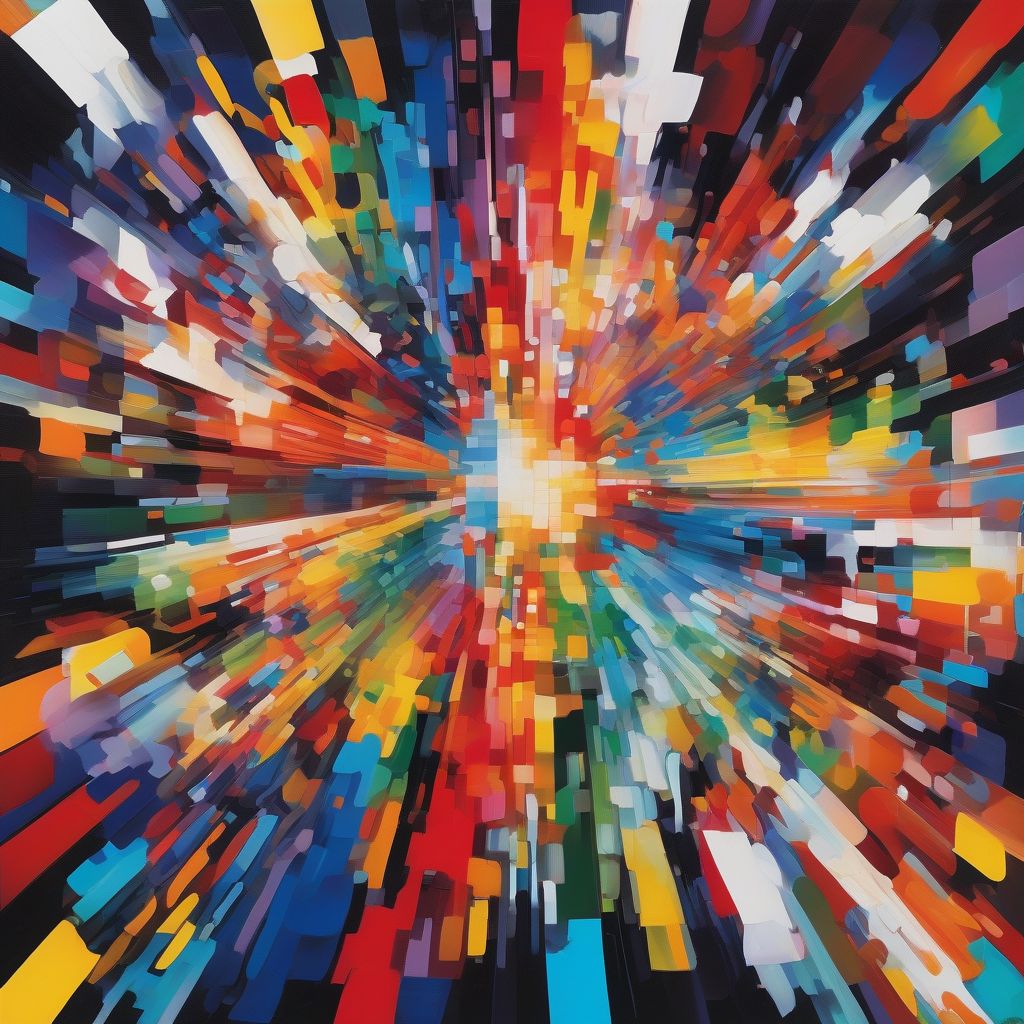Imagine standing before a blank canvas, a blinking cursor on a screen, or a lump of clay waiting to be molded. The creative process, whether in technology or art, can feel both exhilarating and daunting. How do we move from that initial void to a finished product, a piece of innovation, a work of art? This journey, often mysterious and seemingly haphazard, can be understood and even enhanced through careful analysis. Let’s dive into the fascinating world of effective creative processes in technology and art.
Unpacking the Creative Process: Common Threads
While technology and art may appear disparate, their creative processes share surprising similarities. At their core, both involve:
1. Ideation and Inspiration: The Spark
Every creation begins with an idea, a spark of inspiration. In technology, this might be the identification of a problem needing a solution. In art, it could be a fleeting emotion, a striking image, or a social commentary waiting to be expressed. Think of the genesis of the iPhone, born from the desire to simplify the mobile phone experience. Or consider Picasso’s “Guernica,” inspired by the horrific bombing of a Basque town. The initial spark, while seemingly spontaneous, is often fueled by observation, research, and a deep understanding of the field.
2. Exploration and Experimentation: The Messy Middle
This stage is where the magic – and the mess – happens. It’s characterized by experimentation, trial and error, and a willingness to embrace failure. Technologists might build prototypes, test code, and iterate on designs. Artists might sketch, explore different mediums, and discard numerous drafts before finding the right expression. This iterative process is crucial for refining ideas and discovering unexpected possibilities.
3. Refinement and Execution: Bringing the Vision to Life
Once a clear direction emerges, the focus shifts to refinement and execution. This stage demands discipline, technical skill, and attention to detail. For a software developer, this might involve writing clean, efficient code. For a sculptor, it might mean meticulously carving and shaping the final form. The goal is to translate the initial vision into a tangible, well-executed product or artwork.
4. Evaluation and Iteration: The Never-Ending Cycle
The creative process doesn’t end with the finished product. Evaluation, reflection, and further iteration are essential for growth and improvement. Technologists gather user feedback and release updates. Artists solicit critiques and continue to evolve their style. This continuous cycle of creation, evaluation, and iteration is what drives innovation and artistic development.
Divergent Thinking and Convergent Thinking: Two Sides of the Same Coin
Effective creative processes often involve a dance between two distinct modes of thinking: divergent and convergent. Divergent thinking is the expansive, brainstorming phase where multiple ideas are generated. Convergent thinking is the focusing phase where ideas are evaluated, refined, and narrowed down to the best solution. Both are essential for effective creation.
The Role of Technology in Artistic Creation
Technology is increasingly influencing the artistic landscape. Digital tools, from graphic design software to 3D printing, offer artists new avenues for expression. These tools don’t replace the core creative process, but they expand the possibilities and offer new ways to explore, experiment, and create.
The Art of Technology: Design and User Experience
Technology, too, has an artistic dimension. The design of a user interface, the elegance of a piece of code, the seamless integration of form and function – these are all expressions of creativity within the technological realm. User experience (UX) design, for instance, is a field dedicated to creating intuitive and aesthetically pleasing digital experiences.
Cultivating Creativity: Tips for Individuals and Teams
Whether you’re an artist, a technologist, or simply someone seeking to unlock your creative potential, here are some strategies for fostering a more effective creative process:
- Embrace Curiosity: Cultivate a curious mindset, ask questions, and explore new ideas.
- Practice Regularly: Just like any skill, creativity can be honed through consistent practice.
- Collaborate and Share: Engage with others, share your work, and solicit feedback.
- Embrace Failure: View setbacks as learning opportunities and don’t be afraid to experiment.
- Create a Supportive Environment: Surround yourself with people who encourage and inspire you.
Conclusion: The Ongoing Journey of Creation
The analysis of effective creative processes in technology and art reveals a fascinating interplay of inspiration, experimentation, and refinement. While the tools and mediums may differ, the underlying principles remain remarkably consistent. By understanding these principles and cultivating a supportive environment, we can unlock our creative potential and bring our visions to life, whether it’s through a groundbreaking technological innovation or a breathtaking work of art. What are your thoughts on the creative process? Share your experiences and insights in the comments below!
 Analysis of Effective Creative Processes in Technology and Art
Analysis of Effective Creative Processes in Technology and Art
- English (Publication Language)
- 260 Pages - 11/22/1985 (Publication Date) - University of California Press (Publisher)
- The Creative Habit: Learn It And Use It For Life
- Twyla Tharp (Author)
- Cameron, Julia (Author)
- English (Publication Language)
- Troward, Thomas (Author)
- English (Publication Language)
- Zinker, Joseph (Author)
- English (Publication Language)
- English (Publication Language)
- 304 Pages - 10/15/2024 (Publication Date) - Hoaki (Publisher)
- Hardcover Book
- English (Publication Language)
- Audible Audiobook
- Sue Monk Kidd (Author) - Jane Oppenheimer, Ann Kidd Taylor (Narrators)
- Griffin, W. Glenn (Author)
- English (Publication Language)










